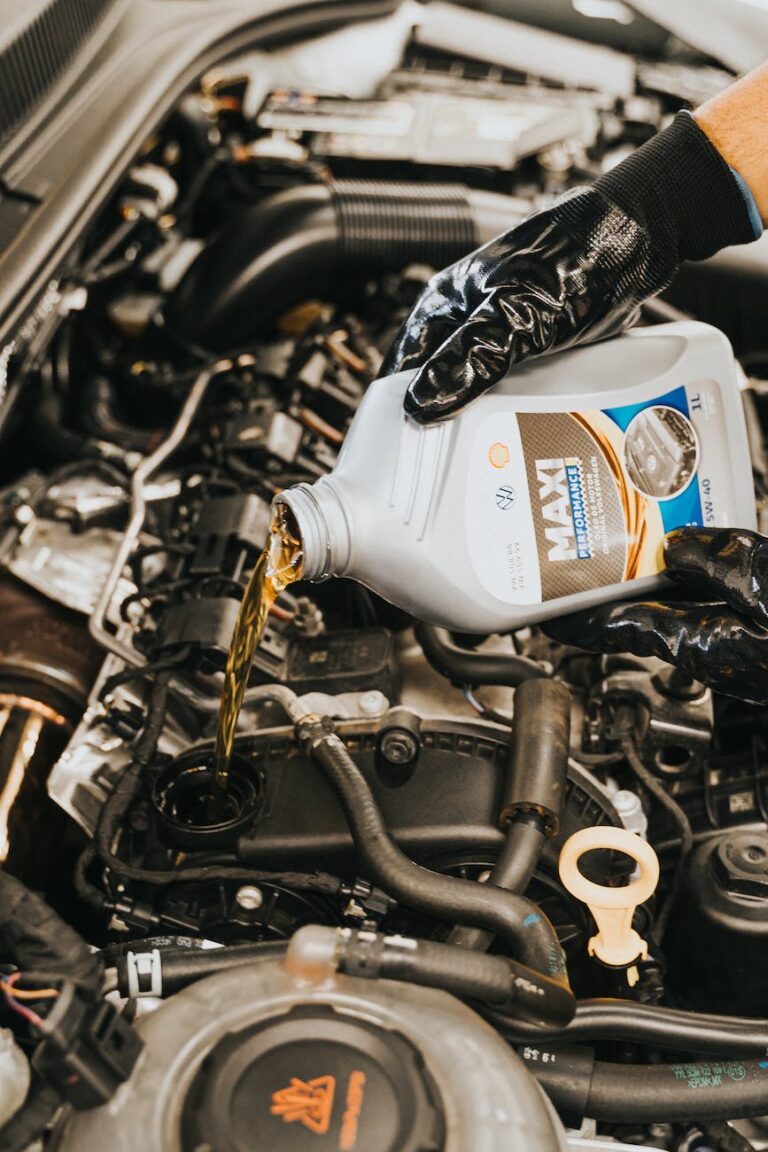Understanding Engine Diagnostics
When it comes to maintaining and troubleshooting vehicle issues, engine diagnostics play a crucial role in identifying and resolving problems. This section will highlight the importance of engine diagnostics and explore the various diagnostic tools available for assessing engine health.
Importance of Engine Diagnostics
Engine diagnostics are essential for keeping your vehicle running smoothly and efficiently. They involve the use of diagnostic tools to communicate with the engine control module (ECM) and retrieve valuable information about the engine’s performance and any potential issues it may be experiencing. By analyzing this data, mechanics and car owners can pinpoint problems, make informed decisions, and take appropriate actions to rectify them.
Timely engine diagnostics can save car owners from costly repairs by detecting issues in their early stages. By identifying and addressing problems promptly, such as malfunctioning sensors or failing components, engine diagnostics can prevent further damage and extend the lifespan of the vehicle. Regular diagnostic check-ups can also help maintain optimal fuel efficiency, reduce emissions, and enhance overall performance.
Diagnostic Tools for Engine Health
To perform engine diagnostics effectively, a range of diagnostic tools are available, including handheld scanners, code readers, and even smartphone apps. These tools are designed to connect to the vehicle’s OBD-II (On-Board Diagnostics) port and retrieve important information about the engine’s performance.
Some popular engine diagnostic apps for iOS devices include:
-
Car Scanner ELM OBD2: A comprehensive engine diagnostic tool that supports all OBD-II protocols and works with a wide range of OBD-II compatible vehicles. It can read and clear diagnostic trouble codes, display real-time sensor data, and offer various tests and functions. The app also allows users to create customized dashboards and access detailed information about their vehicle’s engine performance.
-
BlueDriver App: This app, along with the BlueDriver sensor, is exclusive to vehicles that use the OBD2 protocol. It can read and clear enhanced codes for ABS, airbag, transmission, and other systems. The app provides access to freeze frame data, live data, and a database of over 6 million confirmed fixes for trouble codes.
-
OBD Fusion: A popular app available for iPhone, iPad, iPod Touch, and Android devices. OBD Fusion allows users to read diagnostic data from their vehicles, create virtual dashboards, estimate fuel economy, read trouble codes, and turn off the check engine light. It supports enhanced diagnostics on various makes and models.
-
RepairSolutions 2 App: This engine diagnostic tool for iOS devices can diagnose and interpret engine codes, retrieve and clear diagnostic trouble codes, provide detailed code descriptions, and offer potential fixes and repair options. The app also provides access to technical service bulletins, recalls, maintenance schedules, and a database of over 20 million verified fixes.
These tools and apps provide car owners and mechanics with valuable insights into their vehicle’s engine performance, allowing them to take appropriate actions to maintain and repair their vehicles effectively.
Understanding engine diagnostics is crucial for ensuring the longevity and reliability of your vehicle. By utilizing the right diagnostic tools and apps, you can stay proactive in identifying and resolving engine issues, ultimately saving time, money, and frustration.
Engine Diagnostic Apps for iOS
When it comes to engine diagnostics, having the right tools can make all the difference in identifying and resolving potential issues with your vehicle. Luckily, there are several engine diagnostic apps available for iOS devices that can help you stay on top of your car’s health. Let’s explore some of the top engine diagnostic apps for iOS:
Car Scanner ELM OBD2
Car Scanner ELM OBD2 is a comprehensive engine diagnostic tool available for iOS devices (Apple App Store). This app supports all OBD-II protocols and works with a wide range of OBD-II compatible vehicles. With Car Scanner ELM OBD2, you can read and clear diagnostic trouble codes, display real-time sensor data, and perform various tests and functions. The app also allows you to create customized dashboards and access detailed information about your vehicle’s engine performance. Additionally, Car Scanner ELM OBD2 provides a built-in GPS logger, allowing you to track and record your vehicle’s movements.
BlueDriver App
The BlueDriver app and sensor work exclusively with vehicles that use the OBD2 protocol, which is standard on all vehicles sold in the United States since 1996 (BlueDriver App). This app has the ability to read and clear enhanced codes for ABS, airbag, transmission, and other systems for most vehicles on the road today. The BlueDriver app provides access to the vehicle’s freeze frame data, live data, and vehicle information to help diagnose problems. It also includes a database of over 6 million confirmed fixes for trouble codes, providing users with potential solutions to their engine problems.
OBD Fusion
OBD Fusion is an app for iPhone, iPad, iPod Touch, and Android that allows you to read diagnostic data from your vehicle. With OBD Fusion, you can create virtual dashboards showing multiple vehicle sensors, estimate fuel economy, read diagnostic trouble codes, and turn off your check engine light (OBDSoftware). This app supports enhanced diagnostics on various vehicle makes and models, including Ford, Lincoln, Mazda, Toyota, Dodge, Chrysler, and more. OBD Fusion is one of the best-selling apps on the market, providing users with a user-friendly interface and comprehensive diagnostic capabilities.
RepairSolutions 2 App
The RepairSolutions 2 app is an engine diagnostic tool for iOS devices that allows users to diagnose and interpret engine codes. It can retrieve and clear diagnostic trouble codes, provide detailed descriptions of the codes, and offer potential fixes and repair options. The app also provides access to technical service bulletins and recalls, as well as maintenance schedules and reminders (App Store). The RepairSolutions 2 app supports all OBD-II compliant vehicles from 1996 and newer, including both domestic and foreign makes and models. It communicates with the vehicle’s engine control module (ECM) via a Bluetooth-enabled OBD-II adapter, providing real-time data and allowing for more accurate diagnosis. With access to a vast database of over 20 million verified fixes, step-by-step repair instructions, and a community forum, the RepairSolutions 2 app offers a comprehensive solution for engine diagnostics.
These engine diagnostic apps for iOS provide valuable insights into your vehicle’s performance and can help you identify potential issues before they become major problems. Whether you choose Car Scanner ELM OBD2, BlueDriver, OBD Fusion, or the RepairSolutions 2 app, having one of these tools on your iOS device can give you peace of mind and empower you to take better care of your car.
Features and Functionality of Engine Diagnostic Apps
When it comes to engine diagnostics, engine diagnostic apps for iOS devices provide a convenient and efficient way to monitor and analyze the health of your vehicle’s engine. These apps offer a range of features and functionality to help you diagnose and troubleshoot engine issues. Let’s explore some of the key features offered by these apps:
Reading and Clearing Diagnostic Trouble Codes
One of the primary functions of engine diagnostic apps is the ability to read and clear diagnostic trouble codes (DTCs). When your vehicle’s onboard computer detects an issue, it generates a DTC that can provide valuable insight into the problem. Engine diagnostic apps allow you to retrieve these codes and view detailed descriptions of their meanings. Additionally, you can clear the codes once the issue has been addressed, turning off the check engine light.
Real-Time Sensor Data and Monitoring
Engine diagnostic apps provide real-time access to a range of sensor data from your vehicle’s engine. This data includes information such as engine RPM, coolant temperature, fuel pressure, and more. By monitoring these parameters in real-time, you can identify any abnormalities or fluctuations that may indicate an underlying issue. This feature allows for proactive maintenance and early detection of potential problems.
Customized Dashboards and Performance Information
Many engine diagnostic apps offer customizable dashboards that allow you to create personalized displays of key engine parameters. You can choose which parameters to display and arrange them according to your preferences. This feature enables you to have a quick and easy visual reference to monitor the performance of your vehicle’s engine and identify any anomalies.
Additional Features for Comprehensive Diagnostics
In addition to the core features mentioned above, some engine diagnostic apps provide additional functionality for more comprehensive diagnostics. These features may include the ability to perform specific tests and functions, such as oxygen sensor testing, EVAP system testing, and more. Some apps also offer access to vehicle-specific databases of fixes and repair information, providing potential solutions to engine problems.
By utilizing these features and functionality offered by engine diagnostic apps, iOS users can have greater control over the health and maintenance of their vehicle’s engine. Whether you need to diagnose a specific issue, monitor engine performance, or simply stay informed about your vehicle’s overall condition, these apps provide a valuable tool for car owners.
Choosing the Right Engine Diagnostic App
When it comes to selecting an engine diagnostic app for iOS, there are several important factors to consider. Choosing the right app can make a significant difference in effectively diagnosing and maintaining your car’s engine health. Here are three key aspects to keep in mind:
Compatibility and OBD-II Support
First and foremost, ensure that the engine diagnostic app you choose is compatible with your iOS device. Most reputable apps are available for download from the Apple App Store. It’s important to verify that the app is supported on your specific iPhone or iPad model.
Additionally, the app should support the OBD-II protocol, which is the industry-standard for engine diagnostics. This protocol allows the app to communicate with your car’s onboard computer system and retrieve essential data regarding engine performance and potential faults. Car Scanner ELM OBD2, available on the Apple App Store, is an example of a comprehensive engine diagnostic tool that supports all OBD-II protocols and a wide range of OBD-II compatible vehicles.
Database of Fixes and Repair Information
A valuable feature to look for in an engine diagnostic app is a comprehensive database of fixes and repair information. A well-curated database provides you with detailed insights into common issues, recommended repairs, and potential solutions. This information can be vital in understanding and addressing any engine problems your vehicle may encounter.
When exploring engine diagnostic apps, consider whether they offer access to a vast repository of repair information. This can help you troubleshoot issues and potentially save on repair costs. Some apps, like RepairSolutions 2 available on the App Store, provide support for all OBD-II compliant vehicles, including both domestic and foreign makes and models.
User Community and Support
Having access to a supportive user community can greatly enhance your experience with an engine diagnostic app. Look for apps that facilitate community interaction, such as forums or user groups, where you can seek advice, share experiences, and learn from other car owners. This community-driven support can be invaluable when troubleshooting complex engine issues.
Additionally, consider whether the app offers reliable customer support channels. It’s beneficial to have a support team that can assist you in navigating the app’s features, addressing technical difficulties, or answering any questions you may have.
When evaluating engine diagnostic apps, take into account the availability of user communities and the responsiveness of customer support. BlueDriver App, which works exclusively with vehicles that use the OBD2 protocol and is available on the App Store, is an example of an app that provides both community support and responsive customer service.
By considering compatibility, database access, and support, you can choose an engine diagnostic app for your iOS device that meets your specific needs. These apps empower car owners to take a proactive approach to engine health and gain valuable insights into their vehicle’s performance and potential issues.
Understanding Diagnostic Reliability
When it comes to engine diagnostics, reliability is of utmost importance to ensure accurate identification of issues and effective maintenance. Diagnostic reliability refers to the consistency and accuracy of diagnostic results, providing confidence in the diagnosis and treatment decisions. In this section, we will explore the importance of diagnostic reliability, methods for assessing it, and factors that can affect it.
Importance of Diagnostic Reliability
Diagnostic reliability plays a crucial role in advancing the science and practice of engine diagnostics. It is essential for accurate identification of existing problems and potential risk factors for engine malfunction. Reliable diagnostic results enable technicians to make informed decisions regarding necessary repairs and maintenance, leading to improved performance and longevity of the engine.
Unreliable diagnostics can lead to misdiagnosis, resulting in unnecessary repairs or overlooking underlying issues. This can be time-consuming and costly for car owners while potentially causing further damage to the engine. Therefore, ensuring high diagnostic reliability is vital for efficient and effective car maintenance.
Methods for Assessing Diagnostic Reliability
Various methods are employed to assess diagnostic reliability. One common method is the test-retest approach, where the diagnostic process is repeated on the same engine under similar conditions to evaluate the consistency of the results. This approach, used in the DSM-5 Field Trials, provides valuable insights into the stability and reliability of the diagnostic criteria (source).
Another method involves audio/video recording of the diagnostic process, allowing for later review and assessment of the diagnostic decisions. This method can generate higher estimates of diagnostic reliability, although caution must be exercised as it may yield higher reliability estimates than may be accurate (source).
Factors Affecting Diagnostic Reliability
Several factors can influence the reliability of engine diagnostics. These include the skill and experience of the technician conducting the diagnostics, the quality and accuracy of the diagnostic tools used, and the consistency and validity of the diagnostic criteria employed.
Technician expertise is critical in accurately interpreting diagnostic results and making informed decisions. Well-trained and experienced technicians are more likely to identify and diagnose engine issues accurately, leading to higher diagnostic reliability.
The quality and accuracy of the diagnostic tools, such as engine diagnostic scanners and software, also play a significant role in achieving reliable results. Using advanced and up-to-date tools that are compatible with the specific engine models enhances the accuracy and consistency of the diagnostics.
Furthermore, the diagnostic criteria employed must be well-defined, comprehensive, and based on reliable sources of information. Regular updates and adherence to industry standards ensure that the diagnostic criteria remain relevant and reliable.
By considering these factors and employing appropriate methods for assessing diagnostic reliability, car owners can have confidence in the engine diagnostics conducted. This allows for accurate identification of issues and informed decision-making regarding repairs and maintenance, leading to optimal engine performance and longevity.
Key Metrics in Diagnostic Reliability
When assessing the reliability of diagnostic tests, several key metrics are used to evaluate their performance. These metrics provide insights into the accuracy and effectiveness of the tests. In the context of engine diagnostics, three important metrics are sensitivity and specificity, positive and negative predictive values, and likelihood ratios.
Sensitivity and Specificity
Sensitivity and specificity are fundamental metrics used to evaluate the performance of diagnostic tests. Sensitivity measures the proportion of true positives (correctly identified cases) out of all individuals with the condition. Specificity, on the other hand, measures the proportion of true negatives (correctly identified non-cases) out of all individuals without the condition.
The formulas to determine sensitivity and specificity are as follows:
- Sensitivity = (True Positives (A)) / (True Positives (A) + False Negatives (C))
- Specificity = (True Negatives (D)) / (True Negatives (D) + False Positives (B))
These metrics help in determining the ability of a diagnostic tool to correctly identify positives and negatives. Sensitivity indicates the test’s ability to detect true positives, while specificity measures its ability to correctly identify true negatives. It is important to note that sensitivity and specificity are inversely related: as sensitivity increases, specificity tends to decrease, and vice versa.
Positive and Negative Predictive Values
Positive and negative predictive values (PPV and NPV) are metrics that determine the probability of a positive or negative test result being a true positive or true negative, respectively. These values take into account the prevalence of the condition in the population being tested.
The formulas for PPV and NPV are as follows:
- Positive Predictive Value (PPV) = (True Positives (A)) / (True Positives (A) + False Positives (B))
- Negative Predictive Value (NPV) = (True Negatives (D)) / (True Negatives (D) + False Negatives (C))
PPVs indicate the proportion of positive findings that are true positives, while NPVs indicate the proportion of negative findings that are true negatives. These metrics help in determining the diagnostic accuracy of a test in a given population.
Likelihood Ratios
Likelihood ratios (LRs) provide information on how the utilization of a particular test alters the probability of a condition being present or absent. LRs take into account both sensitivity and specificity.
The formulas for likelihood ratios are as follows:
- Positive Likelihood Ratio (LR+) = Sensitivity / (1 – Specificity)
- Negative Likelihood Ratio (LR-) = (1 – Sensitivity) / Specificity
LR+ indicates the likelihood of a positive test result given the presence of the condition, while LR- indicates the likelihood of a negative test result given the absence of the condition. These ratios help in interpreting the test results and adjusting the pre-test probability of the condition.
By considering sensitivity, specificity, positive and negative predictive values, and likelihood ratios, one can gain a comprehensive understanding of the reliability and performance of diagnostic tests in engine diagnostics. These metrics assist in making informed decisions and interpretations based on the test results.
Engine Diagnostic Apps for iOS
Car Scanner ELM OBD2
BlueDriver App
OBD Fusion
RepairSolutions 2 App
For iOS users seeking reliable engine diagnostic tools, several apps are available to assist in maintaining their vehicles. These apps provide valuable insights into the health and performance of engines, enabling users to diagnose and troubleshoot issues effectively. Here are four notable engine diagnostic apps for iOS:
Car Scanner ELM OBD2
Car Scanner ELM OBD2 is a comprehensive engine diagnostic tool available for iOS devices. It supports all OBD-II protocols and works with a wide range of OBD-II compatible vehicles. This app offers an array of features and functions that aid in engine diagnostics. Users can read and clear diagnostic trouble codes, view real-time sensor data, and perform various tests and functions to assess their vehicle’s performance. Car Scanner ELM OBD2 also allows for the creation of customized dashboards to display specific information of interest. Additionally, it includes a built-in GPS logger, enabling users to track and record their vehicle’s movements. For further details, visit the Apple App Store.
BlueDriver App
The BlueDriver app, coupled with the BlueDriver sensor, is designed exclusively for vehicles employing the OBD2 protocol, which has been standard on all US vehicles since 1996. This app provides enhanced diagnostics by reading and clearing trouble codes for various systems, including ABS, airbag, and transmission. It offers access to freeze frame data and live data from the vehicle, facilitating the diagnosis of problems. In addition, the app boasts a database of over 6 million confirmed fixes for trouble codes, providing users with potential solutions to their engine issues. Discover more about the BlueDriver app at BlueDriver App.
OBD Fusion
OBD Fusion is a versatile app available for iPhone, iPad, iPod Touch, and Android devices. It enables users to read diagnostic data from their vehicles, offering a range of features to aid in engine diagnostics. With OBD Fusion, users can create virtual dashboards displaying multiple vehicle sensors, estimate fuel economy, read diagnostic trouble codes, and turn off the check engine light. The app supports enhanced diagnostics for various vehicle makes, including Ford, Toyota, Nissan, and more. To explore OBD Fusion further, visit OBDSoftware.
RepairSolutions 2 App
The RepairSolutions 2 app serves as a comprehensive engine diagnostic tool for iOS devices. It allows users to diagnose and interpret engine codes effectively. This app retrieves and clears diagnostic trouble codes, provides detailed code descriptions, and suggests potential fixes and repair options. RepairSolutions 2 also offers access to technical service bulletins, recalls, maintenance schedules, and reminders. Compatible with all OBD-II compliant vehicles from 1996 and newer, including domestic and foreign makes and models, the app communicates with the vehicle’s engine control module (ECM) via a Bluetooth-enabled OBD-II adapter. This enables real-time data retrieval and accurate diagnosis. The app offers additional features such as Freeze Frame data, which captures the vehicle’s condition at the time a fault occurs, aiding in issue identification. Users can also monitor various engine parameters through live data streaming. With a vast database of over 20 million verified fixes, RepairSolutions 2 provides step-by-step repair instructions, illustrations, wiring diagrams, and technical specifications. The app offers a community forum where users can seek advice and engage with other automotive enthusiasts and professionals. Furthermore, the app can read and clear codes for other vehicle systems, including the transmission, ABS, and airbag. This comprehensive functionality allows for thorough vehicle diagnostics and troubleshooting. To learn more about RepairSolutions 2, visit the App Store.
These engine diagnostic apps for iOS empower users to monitor the health and performance of their vehicles conveniently. Whether you choose Car Scanner ELM OBD2, BlueDriver, OBD Fusion, or RepairSolutions 2, each app offers unique features and benefits to assist you in maintaining a well-functioning engine.







